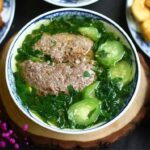1. Method 1: Walking for Weight Loss
Walking is the top-rated method for its simplicity, ease of maintenance, and noticeable results. Suitable for all ages, from children to the elderly, this form of exercise improves overall health without requiring specialized equipment or a large space.
Start with a gentle 20- to 30-minute walk each day, and gradually increase the intensity by walking faster or adding inclines. If you’re short on time, walk to work, stroll around the park in the evening, or take the stairs instead of the elevator.

Walking not only burns calories but also stimulates the circulatory system, reducing the risk of cardiovascular disease and improving mood. Walking outdoors in natural light also helps the body absorb vitamin D, benefiting bones and skin.
2. Method 2: Reduce Sugar Intake
In Japan, limiting sugar in daily meals is a popular weight management secret. The Japanese focus on minimizing sugary drinks, candies, and replacing them with natural foods. Research shows that reducing sugar not only aids in weight loss but also improves skin health and prevents diseases like diabetes and high cholesterol. Many people who adopt this method lose up to 22 lbs. (10 kg) in just six months. Restricting sweets doesn’t mean giving them up entirely. You can still indulge in your favorite treats but in moderation or on special occasions.

Swap sugary drinks like bubble tea and soda for green tea, chamomile tea, or water. When choosing fruit, opt for low-sugar options like grapefruit, apples, or kiwis instead of mangoes or grapes. Additionally, read food labels carefully to avoid hidden sugars.
3. Method 3: Weight Training
Not just a Western trend, weight training is a popular weight loss method in Japan for achieving a toned and healthy physique. This approach effectively burns excess fat while building muscle and increasing strength.
Start with light exercises like planks, squats, or light dumbbell workouts at home. As you build strength, gradually increase the weight and try more advanced exercises at the gym. Aim for 3–4 sessions per week to allow your body to recover.

Proper form is essential to avoid injury, and combining weight training with a protein-rich diet will enhance results.
4. Method 4: Low-Carb Diet
A low-carb diet is consistently ranked among Japan’s top weight loss methods. By reducing carbohydrate intake, the body is forced to use stored fat for energy, leading to rapid weight loss. Instead of white rice, try brown rice, oats, or sweet potatoes. Combine these with green vegetables, chicken, salmon, and eggs to ensure adequate nutrition without excess calories.

A low-carb diet not only aids weight loss but also improves health conditions like diabetes and high blood pressure. However, it’s important to implement this method correctly to avoid fatigue and energy deficits.
5. Method 5: Say No to Snacking
Snacking is a major, often overlooked, contributor to weight gain. From pastries to bubble tea, these treats are calorie-dense and promote fat accumulation. Prepare healthy snacks like almonds, unsweetened yogurt, or fresh fruit to curb cravings between meals.

Eliminating snacks from your daily routine can lead to natural weight loss without reducing main meal portions.
6. Method 6: Intermittent Fasting
Intermittent fasting is a popular weight loss trend in Japan, especially the practice of fasting one day per week. This method regulates weight, improves digestion, and detoxifies the body. The Japanese typically follow a cycle of “healthy eating from Tuesday to Friday, indulging on the weekend, and fasting on Monday.” This gives the body a “break” after consuming high-calorie foods.

Intermittent fasting is flexible, easy to follow, and doesn’t require giving up all your favorite foods. It’s also less stressful and suitable for busy individuals or those with limited time for exercise.
7. Method 7: Running
Running is one of the most popular cardio exercises, quickly burning calories and improving cardiovascular health and endurance. This method not only aids weight loss but also enhances overall wellness, boosts mood, and energizes the body. Running outdoors in fresh air reduces stress and increases motivation. Form a running group for added motivation, or set small goals like increasing your distance each week.

Running not only burns excess fat but also strengthens the cardiovascular system, boosts immunity, and keeps your spirit high.
8. Method 8: Diaphragmatic Breathing
Diaphragmatic breathing is a unique and easy-to-implement weight loss method favored by many Japanese. This approach not only reduces belly fat but also promotes relaxation and improves overall health and well-being.
How to do it: Take a deep breath, expanding your belly. Hold your breath for 3–5 seconds, then slowly exhale as you pull your belly button toward your spine. Practice for 5–10 minutes daily, preferably in the morning or before bed.

This exercise improves blood circulation, enhances lung function, and tones the abdominal muscles without strenuous movement. It’s ideal for busy individuals or those with limited time for exercise.
9. Method 9: Food Order Matters
Changing the order in which you eat is a smart weight loss secret practiced by the Japanese. This method helps control calorie intake without fasting, reducing hunger and preventing weight gain. If you adopt this method, try eating your meals in the following order: vegetables first, then protein, and finally, carbohydrates. Start your meal with a salad or steamed vegetables, followed by meat, fish, or eggs, and finish with rice or noodles.

Eating vegetables first fills your stomach, reducing hunger and controlling calorie intake. This approach also helps maintain stable blood sugar levels and prevents fat accumulation.
10. Method 10: One Meal a Day (OMAD)
Despite being a controversial method, some Japanese adhere to the OMAD diet as an effective weight loss strategy. However, this approach requires careful consideration to avoid adverse health effects. With OMAD, you can rapidly lose weight by reducing your daily calorie intake. This method also gives your body extended rest periods, improving digestion and metabolism.

If not done correctly, OMAD can lead to nutritional deficiencies, constipation, or energy imbalances, resulting in fatigue and weakness.
Adopting one or combining several of these methods will help you achieve sustainable, safe, and effective weight loss. Remember, weight loss is not a race but a journey toward a healthier and happier lifestyle.
The Leading Lady’s Post-Pregnancy Weight Loss: An Effective Strategy Revealed
“Japanese-Vietnamese actress and singer, Nhat Kim Anh, has always been conscious of her physical appearance, even after giving birth. She has embarked on a noteworthy journey of self-improvement by deciding to lose weight in a commendable and healthy manner. Her dedication to regaining her pre-baby body is an inspiration to many new mothers.”






































